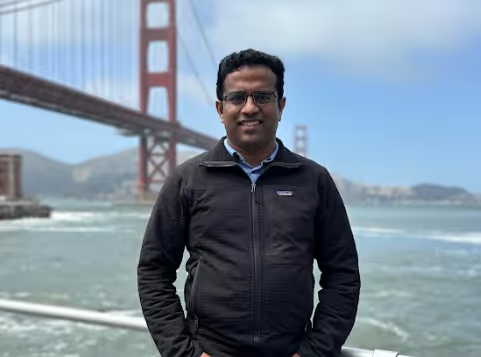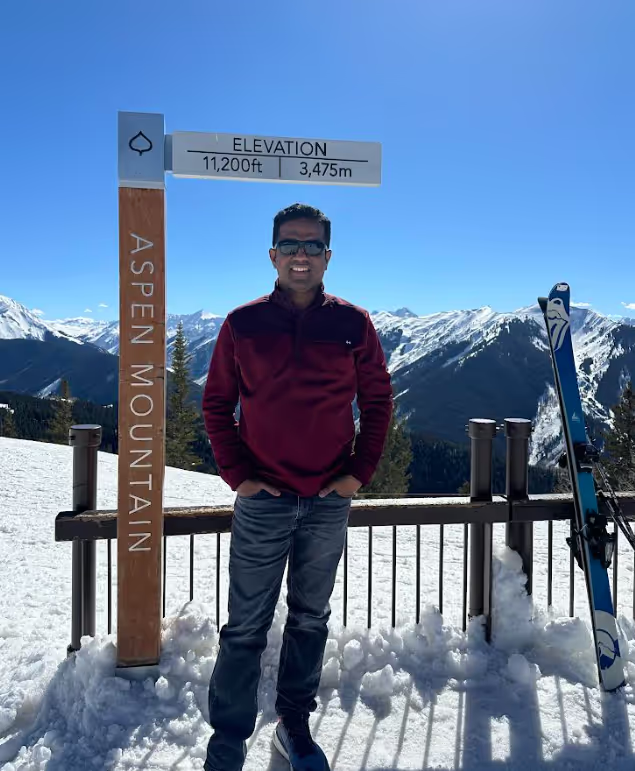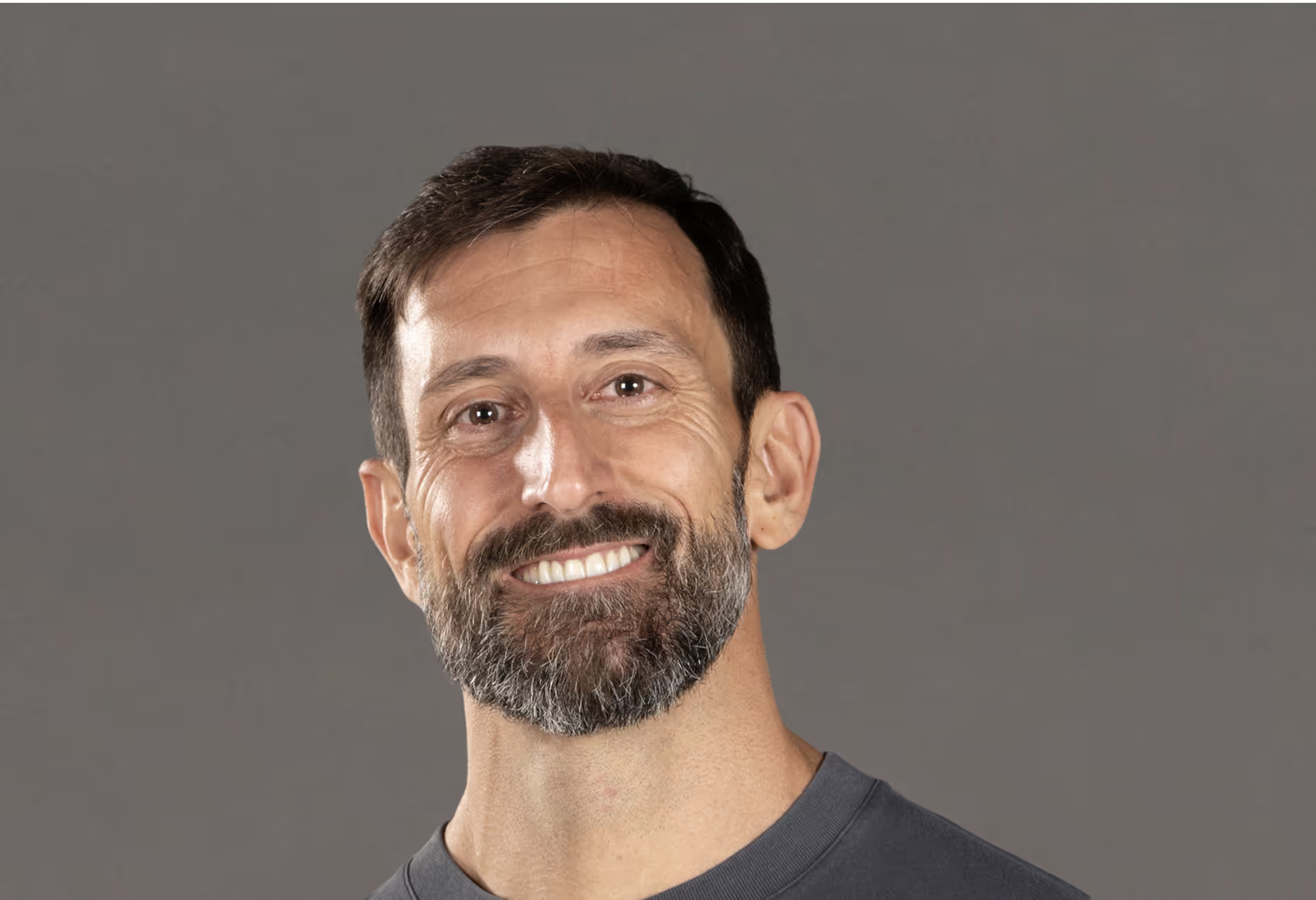
In Conversation with Sandeep Kaipu, Engineering Manager R&D, Broadcom
Sandeep Kaipu, Engineering Manager at Broadcom, shares his vision for AI-driven enterprise technology, blending technical mastery with transformative leadership. From AI infrastructure and private cloud to fostering innovation across global teams, Sandeep highlights how curiosity, clarity, and purpose empower engineers to create lasting impact.
If you’ve ever wondered what the future of AI-driven enterprise technology looks like, Sandeep Kaipu is someone to watch. With a blend of deep technical mastery and transformative leadership, Sandeep is shaping the architecture that powers private cloud and AI infrastructure at Broadcom, where he leads VMware Cloud Foundation (VCF) platform services.
In this candid conversation, Sandeep shares why engineering isn’t just about building systems, but about fostering creativity and collaboration. He reflects on his journey from designing hands-on, large-scale systems to leading global teams, and explains how the next wave of AI innovation will rely as much on human ingenuity as on technology itself.
From his insights as the author of AI Engineering Leadership (2025) to his reflections on patents and breakthroughs cited by industry giants like Microsoft, Apple, and Citrix, Sandeep offers a perspective on how leadership and engineering intersect in the enterprise world. Whether you’re an engineer, technologist, or leader, this interview will challenge how you think about innovation, AI, and the future of enterprise technology.
Ready to dive in? Let’s get into Sandeep’s vision.
You’ve built an extraordinary career across companies like Broadcom, VMware, Samsung, and Nokia. Looking back, what has been the thread connecting all your roles?
At every stage of my career, the connecting thread has been building platforms that empower others, whether they’re developers, enterprises, or end users.
At Samsung, I was working on the early days of smartphone platforms, helping bridge fragmented ecosystems like Android, J2ME, and BREW MP. At Nokia, I focused on large-scale data pipelines for location and social platforms in emerging markets. And at VMware and now Broadcom, my focus has been on enterprise infrastructure that enables scalable, secure, and intelligent systems.
The unifying philosophy is this: true engineering leadership isn’t about building isolated technologies, it’s about architecting ecosystems that enable innovation to flourish. That’s as true for code as it is for people.
Your recent focus has been AI infrastructure and private cloud. What excites you most about this space right now?
What excites me most is that AI infrastructure has evolved from an IT concern to a strategic differentiator. Every enterprise wants to operationalize AI, but doing so responsibly, securely, and at scale requires foundational engineering excellence.
At Broadcom, I lead the development of platform services for VMware Cloud Foundation, which now powers private AI workloads across Fortune 500 companies. Our team focuses on automating GPU provisioning, deep learning cluster orchestration, and compliance-aware lifecycle management.
What’s transformative is not just the technology, it’s the mindset shift. We’re enabling enterprises to move from experimentation to operationalization of AI. That means treating infrastructure not as plumbing, but as an enabler of insight, creativity, and decision intelligence.
You’ve written a book titled AI Engineering Leadership. What inspired you to write it, and what’s at its core message?
The book emerged from a realization I had after years of leading large engineering teams: AI is reshaping not just what we build, but how we lead.
Many leaders today are fluent in strategy but not in systems thinking; others are technically brilliant but struggle to connect their work to business outcomes. AI Engineering Leadership was my attempt to bridge that gap. It introduces a framework for aligning business value, technology depth, and human development, the three levers that determine lasting impact.
At its heart, the book argues that leadership in the AI era demands a balance of logic and empathy. You need to understand architectures and algorithms, but you also need to cultivate trust, curiosity, and purpose within teams. That’s what transforms good engineering into great innovation.
Your patents have been widely cited by Microsoft, Apple, Citrix, and others. How do you view innovation and intellectual property in your career journey?
I’ve always believed that innovation is storytelling through technology. A patent is essentially a narrative, it tells the story of a problem that mattered and a novel way of solving it.
When I developed patents like Inter-application Secure Data Sharing Workflow or On-Demand Per-App VPN Connectivity, I wasn’t chasing IP for its own sake. These were answers to real-world challenges enterprises faced: how to make mobile ecosystems secure without sacrificing user experience.
Seeing these inventions later cited and built upon by companies like Microsoft or Citrix was deeply rewarding, not for personal recognition, but because it validated that our work contributed to the global dialogue of engineering progress.
To me, the purpose of intellectual property isn’t exclusivity—it’s evolution.

As an engineering manager leading global teams, how do you cultivate innovation and alignment across diverse geographies and disciplines?
Leading distributed teams requires two kinds of alignment: technical alignment and emotional alignment.
On the technical side, I emphasize shared architectural clarity, every engineer, whether in Palo Alto, Sofia, or Bangalore, should understand not just what we’re building but why. We invest time in designing for scalability, reusability, and resilience because those principles transcend codebases and cultures.
On the emotional side, leadership is about creating safety and ownership. People innovate when they feel trusted and heard. I hold weekly sessions where engineers can challenge design assumptions, suggest optimizations, or present mini “innovation pitches.” Some of our best ideas—like parallel ESXi upgrades that reduced maintenance time by 60%—came from these discussions.
In essence, alignment comes not from control, but from clarity and connection.
You’re also known for your involvement with Founders Creative and as Co-Chair of its Engineering Council. How did that evolve, and what drives your engagement there?
Founders Creative is a platform that champions underrepresented founders and technologists, helping them gain visibility, mentorship, and access to opportunities. When I was invited to serve as Co-Chair of the Engineering Council, I saw it as a way to give back to the ecosystem that shaped me.
I help evaluate technical submissions, moderate panels, and mentor early-stage founders on topics like AI infrastructure, scaling engineering teams, and product-market fit. What I love most is the diversity of thought—you meet founders solving problems that blend empathy and engineering in unexpected ways.
At events, I’ve had the privilege of moderating panels on AI innovation. What stays with me isn’t the technology itself but the shared sense of possibility. It reminds me that leadership is service—helping others see their own potential more clearly.
You’ve worked through multiple technological shifts, from the rise of smartphones to the current AI wave. What’s your philosophy for staying relevant as a technologist and leader?
Curiosity is the only sustainable strategy.
The technologies change, mobile platforms, cloud, AI, but the core skill is curiosity. I make it a practice to dedicate a few hours each week to exploring something unrelated to my current projects: a new framework, a paper on scaling AI, or even a startup’s architecture deck.
As a leader, I encourage my teams to do the same. At Broadcom, we run internal “learning sprints,” where engineers explore new tools and present learnings in lightning sessions. It keeps the culture vibrant and adaptable.
But relevance isn’t just technical, it’s also emotional. The best leaders evolve not just their tech stack, but their empathy stack.
Can you share a challenge from your leadership journey that significantly shaped your perspective?
One of the most defining experiences was leading the Workspace ONE SDK team at VMware. We started as three engineers and eventually grew into a thirty-person global team delivering a platform that would go on to serve over 30 million users.
Scaling that fast wasn’t easy. We faced the classic tension between innovation and stability, speed and sustainability. I learned that the real job of a leader is not to have all the answers, but to build a system that keeps learning faster than the challenges evolve.
At one point, a major release had to be re-architected under tight deadlines due to shifting compliance standards. Instead of panic, we turned it into a learning sprint—every engineer contributed to a new resilience framework that later became a core SDK feature. That experience cemented my belief that crisis is the ultimate classroom for leadership.
You often speak about connecting business value and engineering excellence. How do you operationalize that philosophy in your teams?
Too often, engineering success is measured by output—number of features, velocity, commits. But true success is about outcomes, not outputs.
At Broadcom, we’ve embedded a simple practice: every initiative must have a “business value hypothesis.” Whether it’s reducing upgrade time or optimizing GPU provisioning, engineers must articulate how their work impacts customer satisfaction, operational cost, or revenue.
We also visualize this through metrics dashboards that connect system performance to business KPIs. This not only motivates engineers but also fosters shared accountability between technical and business teams.
When engineers understand how their work drives real-world value, they stop coding for completion—and start coding for impact.
Finally, what advice would you give to emerging engineering leaders navigating the AI-driven future?
My advice is threefold:
- Build range. Learn to connect dots across disciplines—AI, systems, product, business. Leadership in AI isn’t about mastering one domain; it’s about integrating many.
- Lead with clarity, not certainty. The AI era is fast-moving and unpredictable. People don’t need leaders who always have the answer—they need leaders who create clarity amid uncertainty.
- Balance speed with soul. AI can accelerate everything—except meaning. Make sure your teams move fast, but also understand why they’re building what they build.
At the end of the day, technology will keep changing, but purpose endures. The leaders who thrive will be those who see AI not as a replacement for human creativity, but as an amplifier of it.
(Thank you, Sandeep, for sharing your insights on AI infrastructure, engineering leadership, and the future of enterprise technology. Your perspective on blending technical excellence with human-centered leadership provides invaluable guidance for anyone navigating the evolving AI-driven landscape. We appreciate your time and thoughtful reflections on how curiosity and purpose can amplify innovation and empower teams to create lasting impact.)
Broadcom at a Glance:
Broadcom Inc. is a global technology leader that designs, develops, and supplies a broad range of semiconductor, enterprise software, and security solutions. Broadcom’s category-leading product portfolio serves critical markets including cloud, data center, networking, broadband, wireless, storage, industrial, and enterprise software. Our solutions include service provider and enterprise networking and storage, mobile device and broadband connectivity, mainframe, cybersecurity, and private and hybrid cloud infrastructure. Broadcom is a Delaware corporation headquartered in Palo Alto, CA.



.png)

